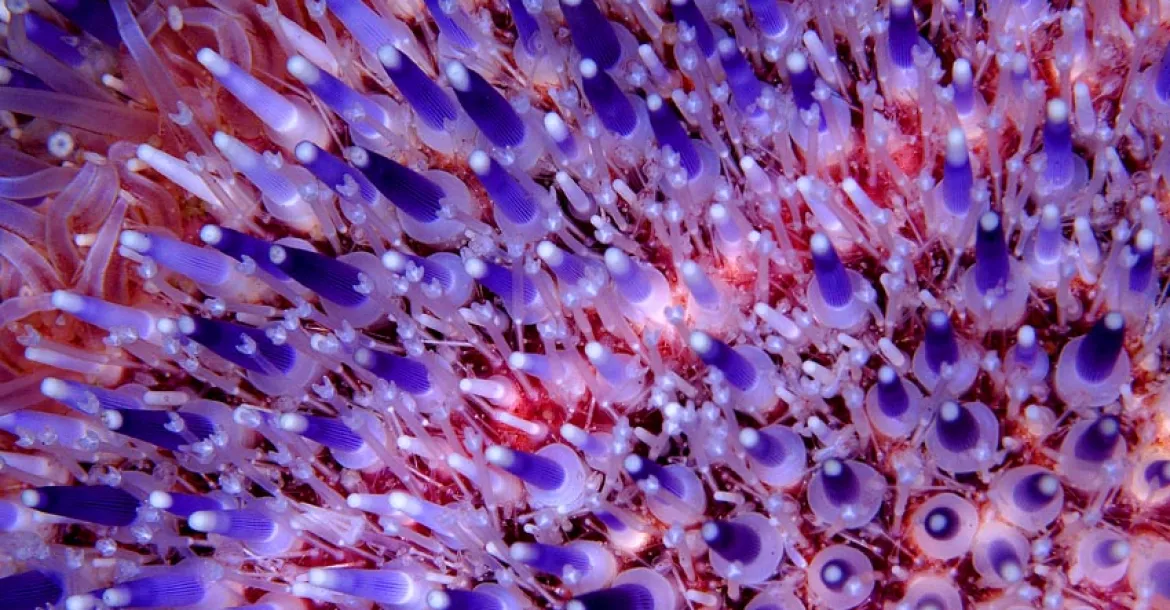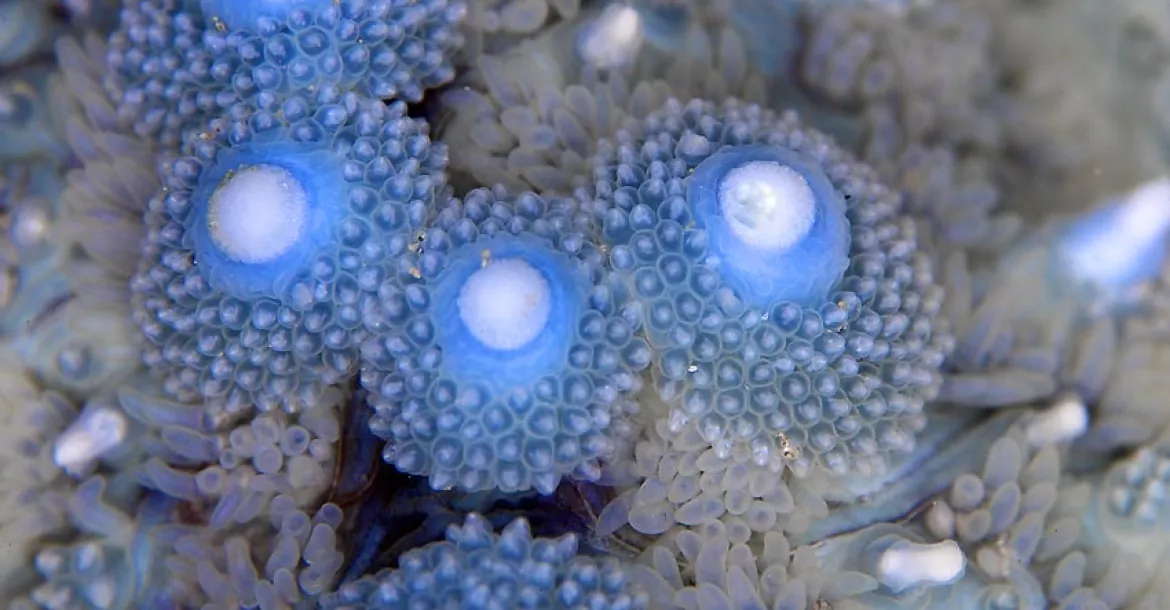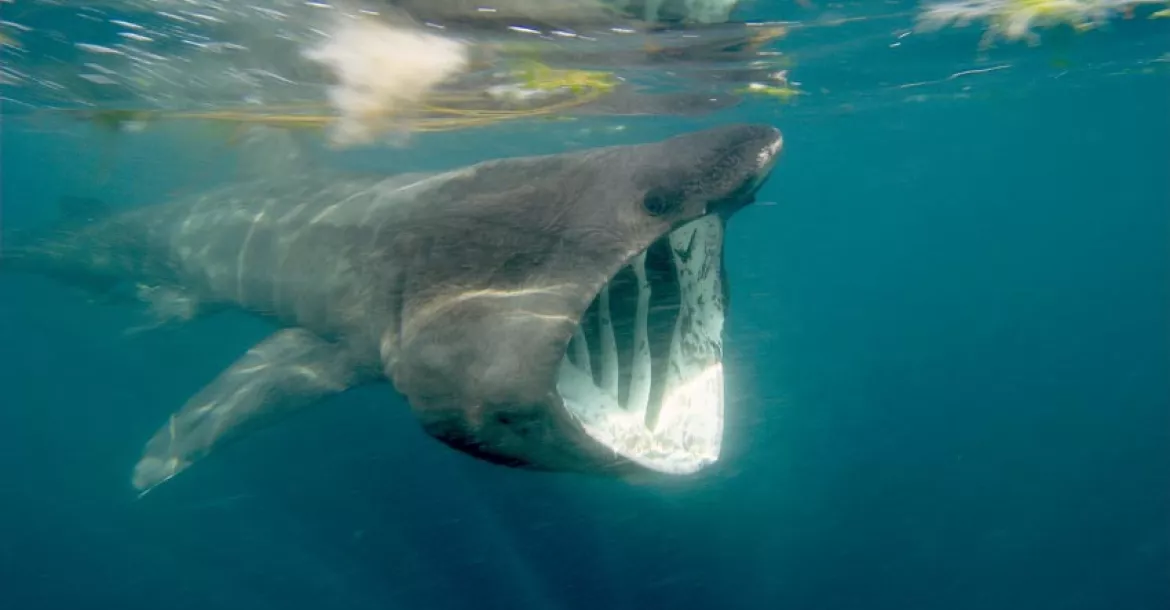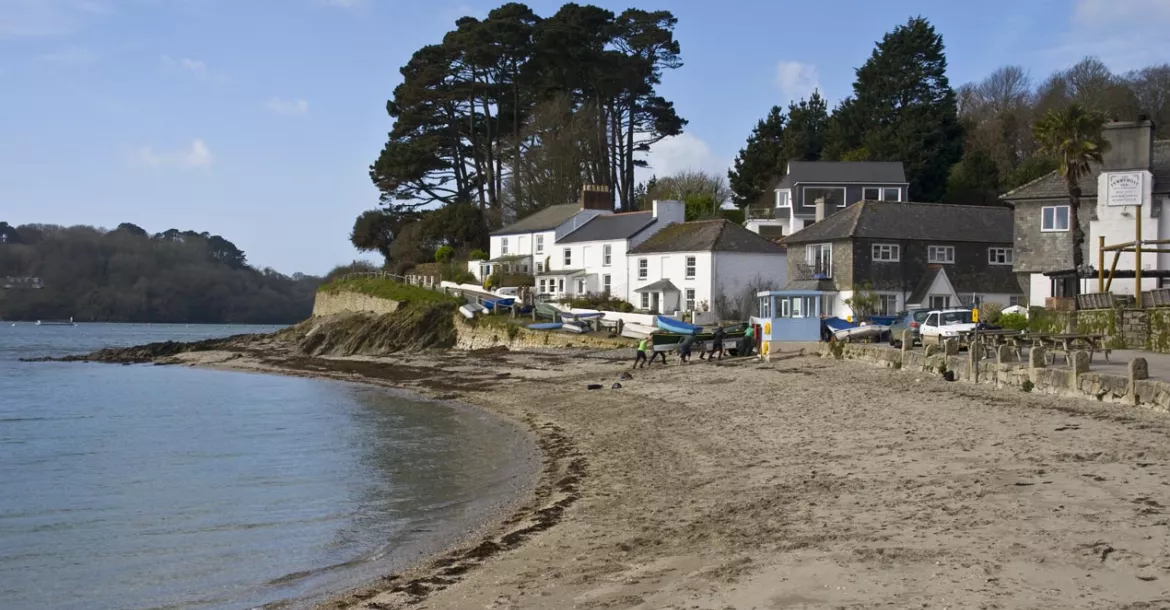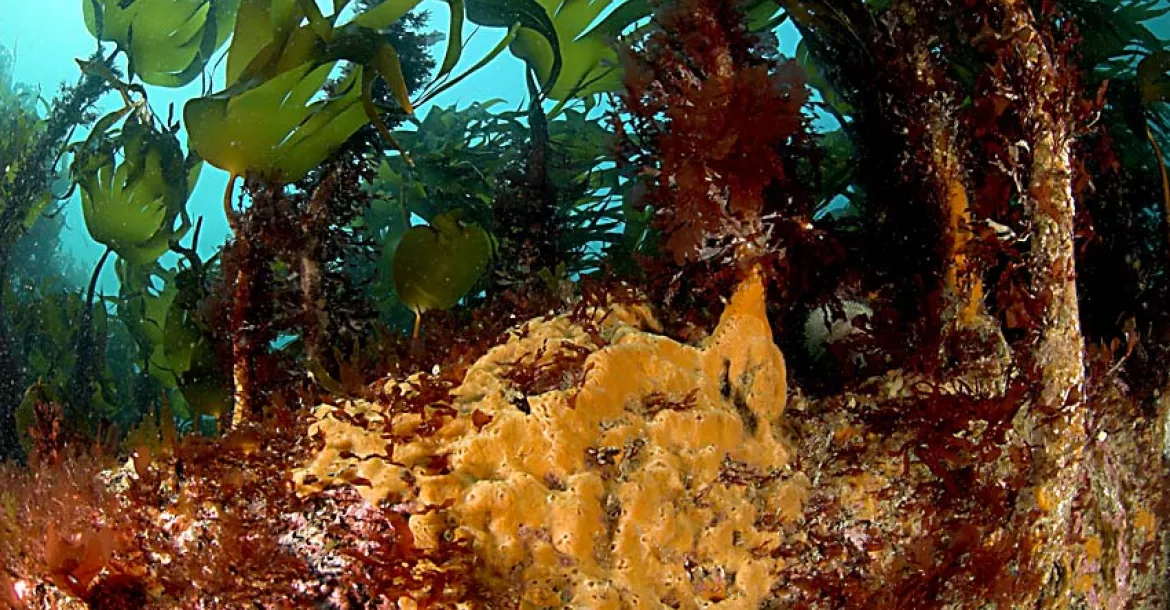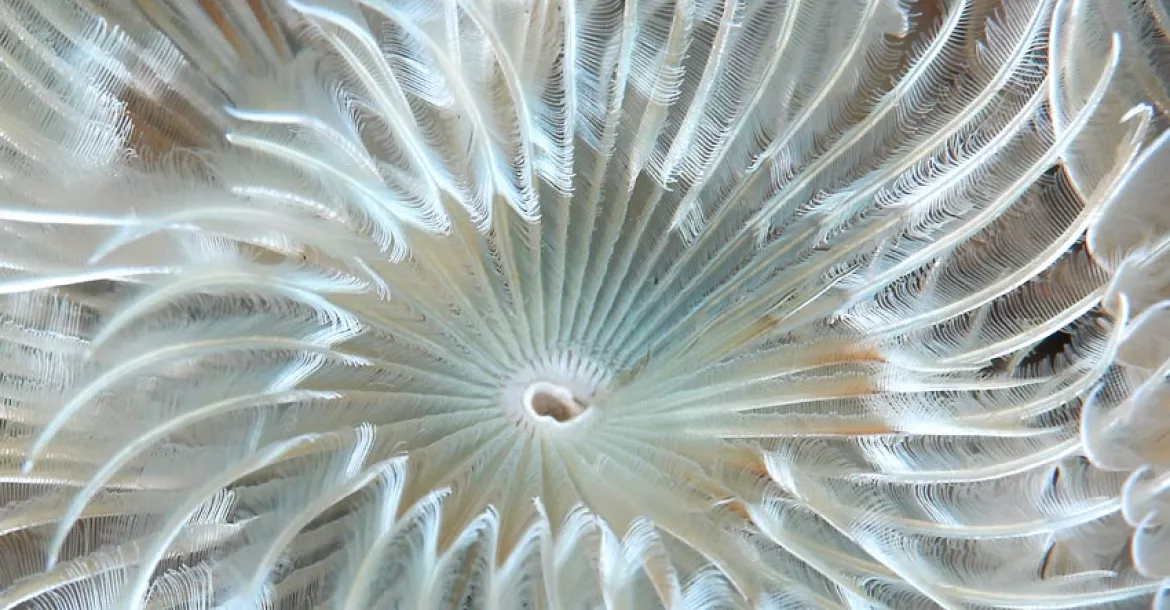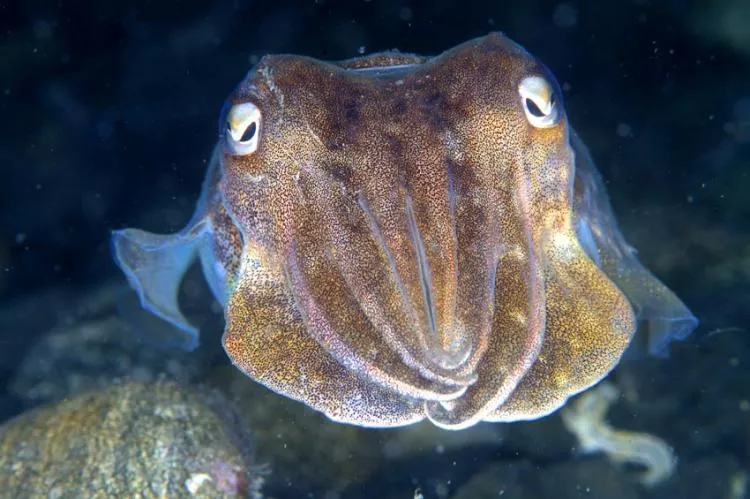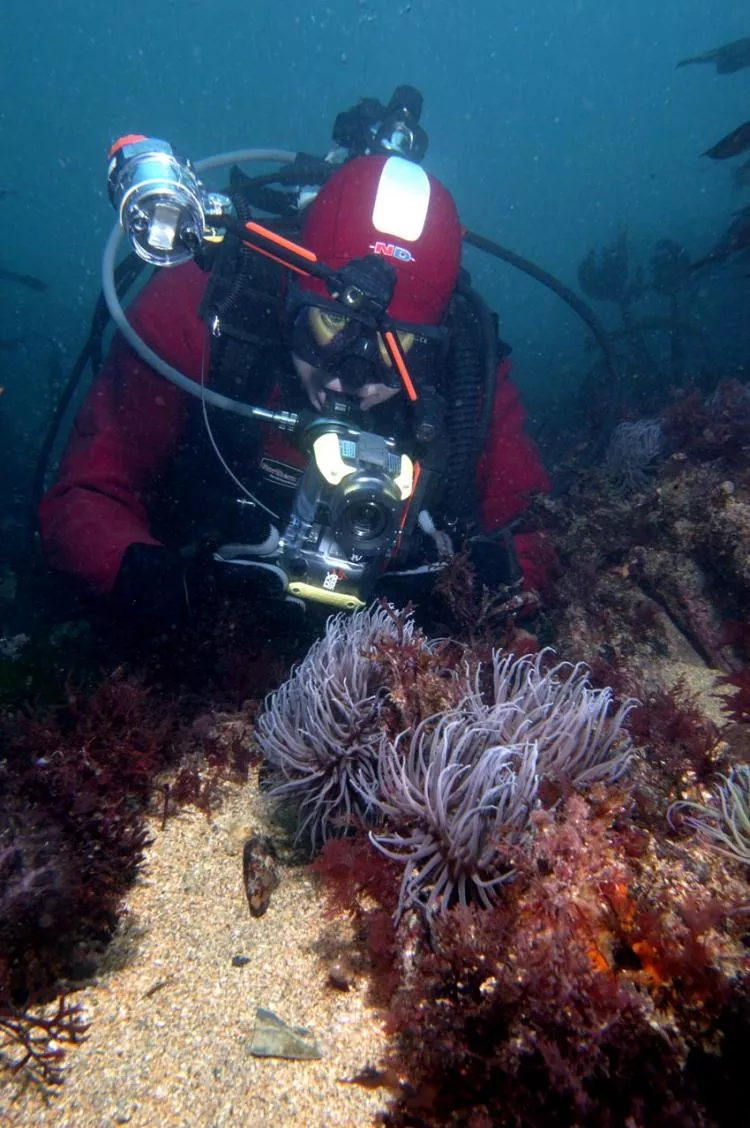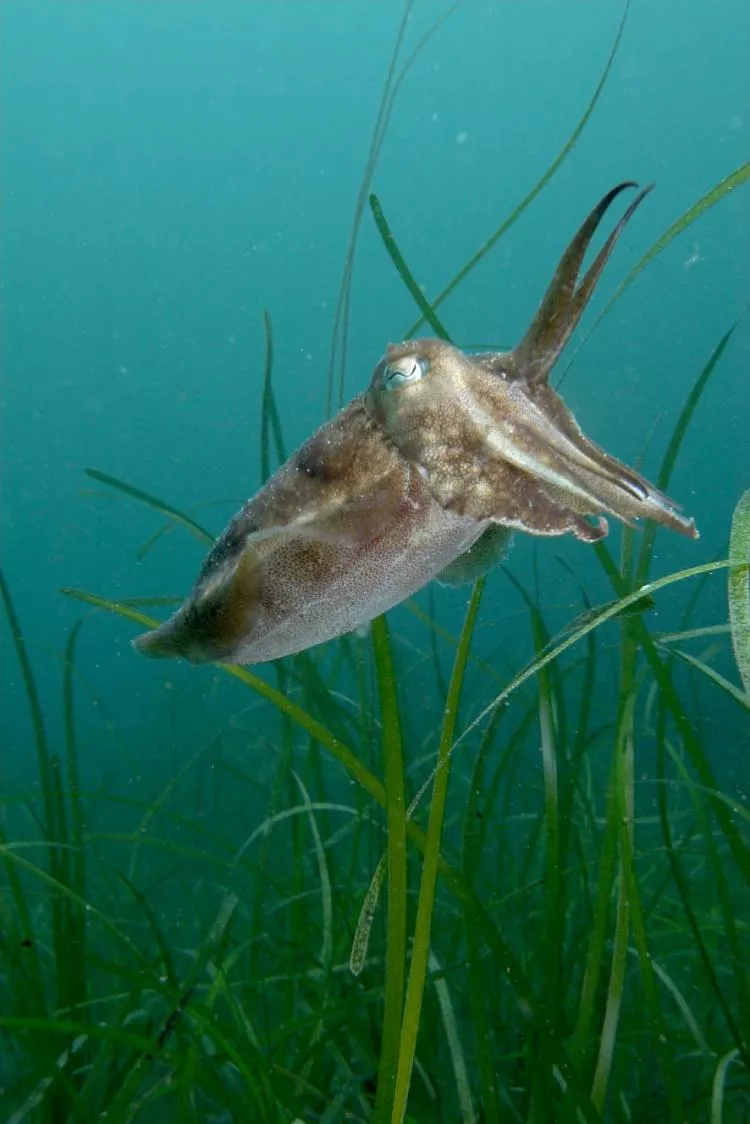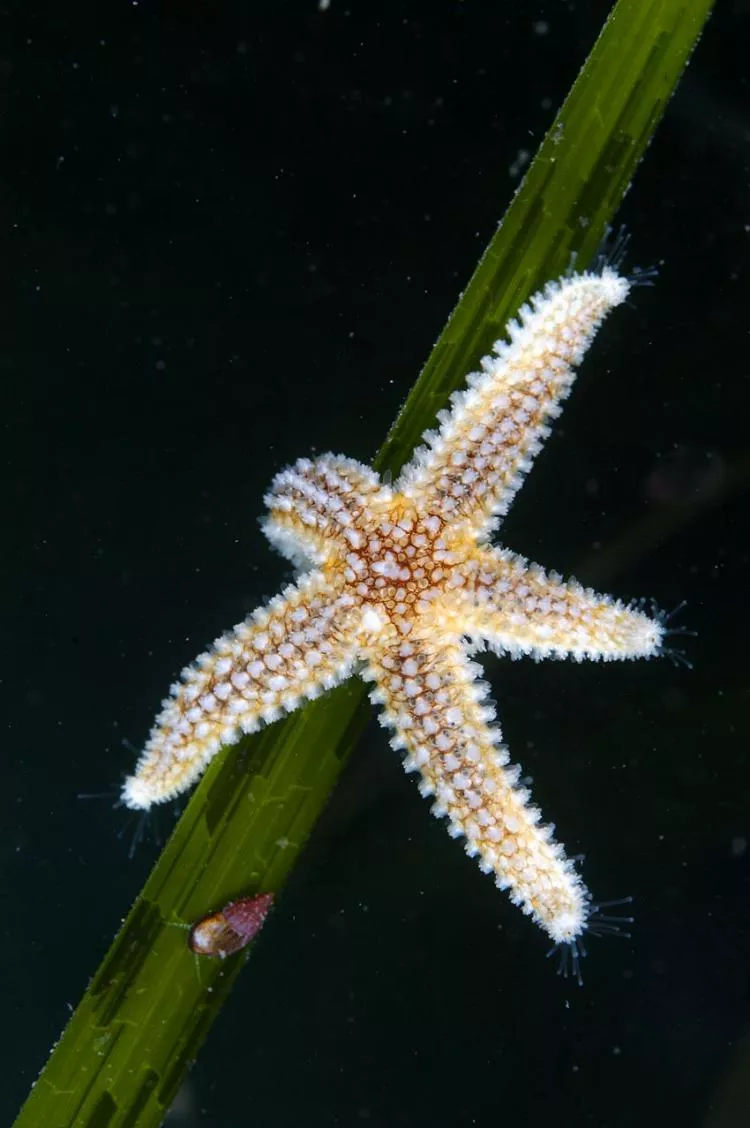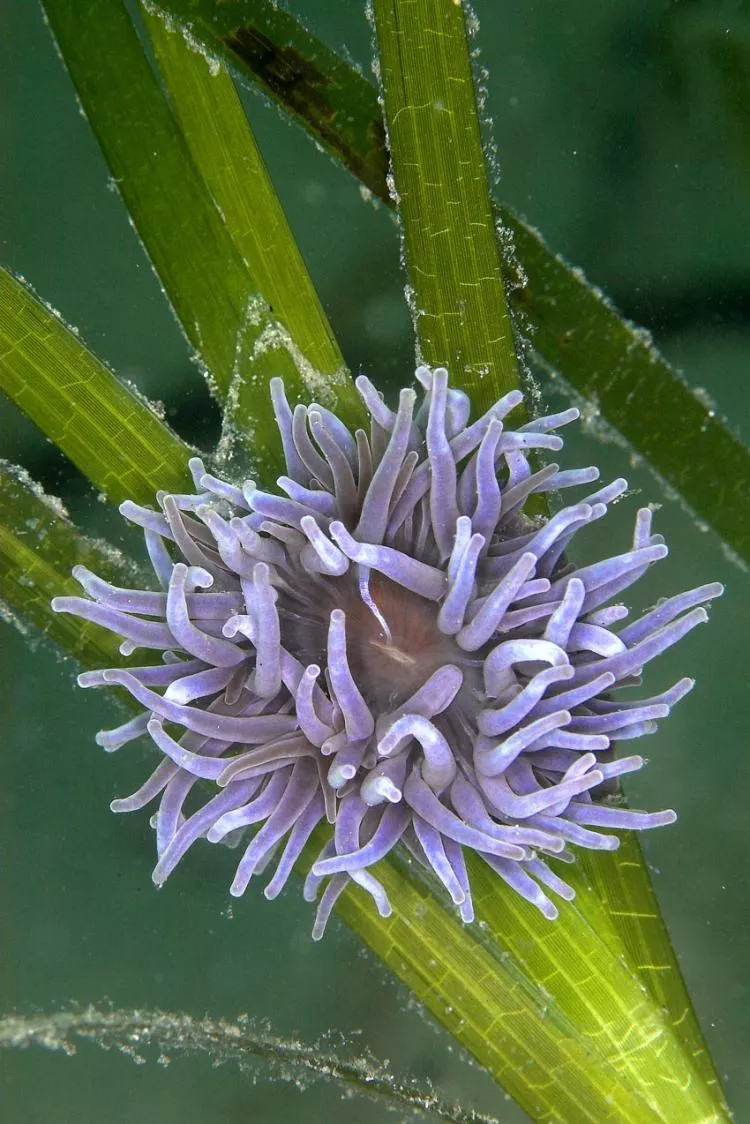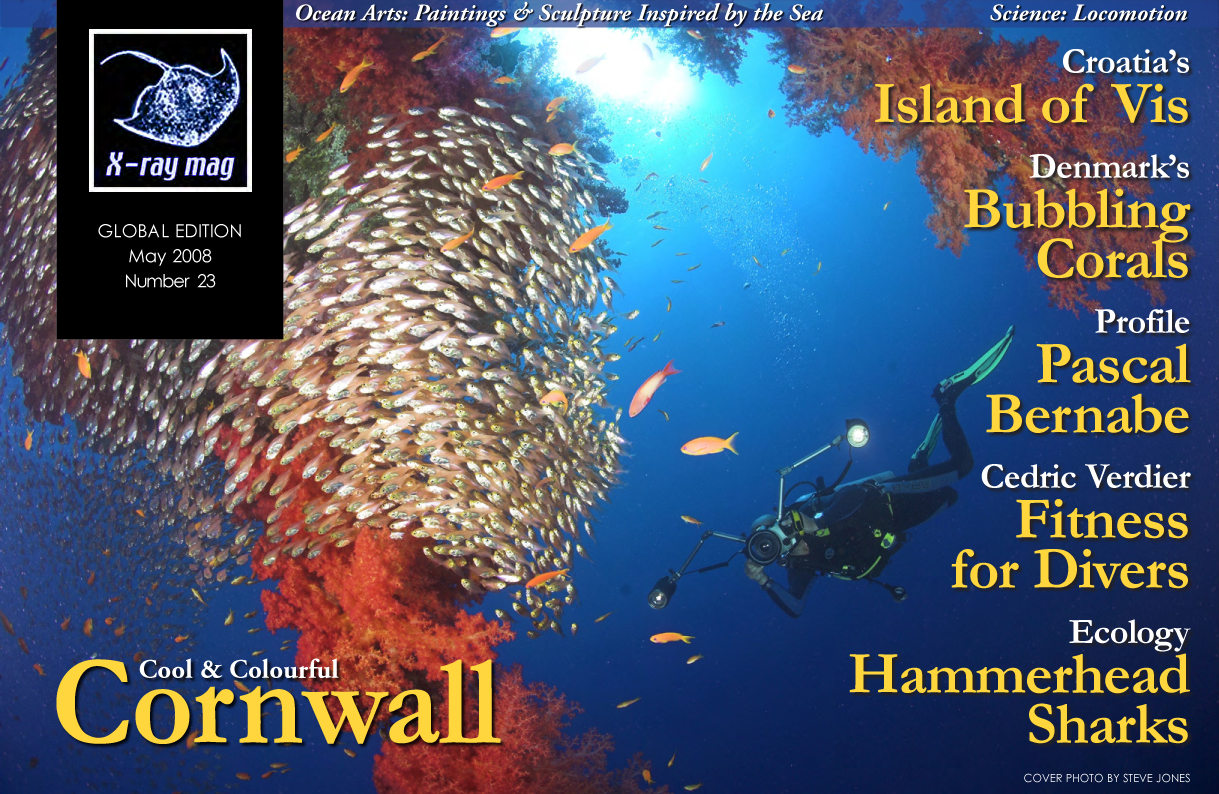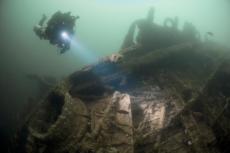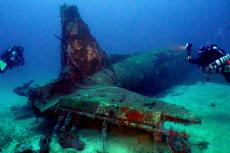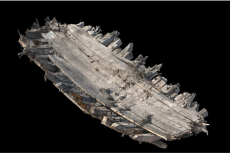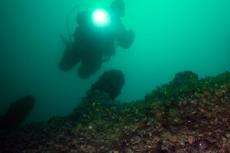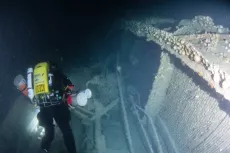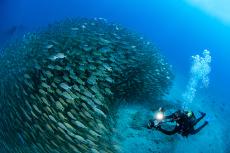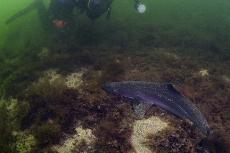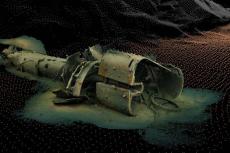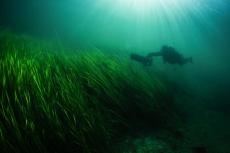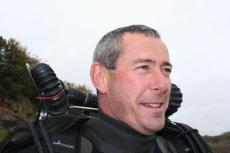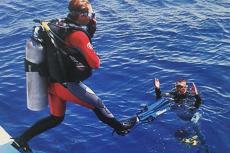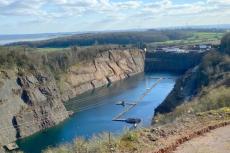Global diving travel has become increasingly easy over the last decade or so, providing easy access to a growing number of tropical and exotic destinations. So, for many divers residing in cooler climates or new to the sport, it is tempting to look only towards these warm distant destinations and perhaps ignore the wealth of marine life on their own doorstep.
Contributed by
Although I have the opportunity to travel regularly to warmer climates, this never discourages me from diving as often as I can in my cooler, but no less spectacular, home waters around the south west peninsula of Cornwall in the United Kingdom. The south west peninsula and county of Cornwall is physically remote from the remainder of the British Isles and also has a rich history full of myth, legend, smuggling and illicit ship wrecking. Industry is sparse in this area, which boasts spectacular countryside, and as a consequence, it is one of the UK’s most popular tourist destinations offering both a slower pace of life, a mild climate and miles of unspoiled coast line and secluded beaches.
The rugged granite of the peninsula juts out into the Atlantic and has a striking contrast between its two coasts. There are calm sleepy inlets, coves and fishing villages on the south coast, while there are dramatic towering cliffs and the power of the Atlantic on the north coast. The rugged topography of the peninsula extends far out to sea, forming reefs, pinnacles and shoals teaming with life.
You can dive a deep wreck in the morning, a spectacular sheer drop-off in the afternoon, and explore shoreline gullies and tunnels in the evening, or after dark. All this makes the area popular with both diving and marine life enthusiasts seeking the variety this coastline provides. It is also popular with the family diver who wishes to mix his or her sport with exploring the attractions on land, some lazy days on the beaches, and the occasional foray under the waves.
The Gulf Stream
The Gulf Stream divides round the peninsula on its path north. The warmer, clearer waters it carries propagates a diversity of indigenous and visiting marine life not generally found elsewhere around the UK’s coastline.
The headlands and offshore reefs are bombarded by nutrients born by the strong tides on both coasts feeding a multitude of species of anemones, soft and stony corals and invertebrate life. These organisms are surprisingly colourful and can give an almost tropical feel to many dives as one swims among gorgonian fan corals, Ross coral, cup corals and walls of brilliantly hued plumose and jewel anemones.
Fish life is profuse with shoals of bass and mackerel, reef dwelling wrasse, flatfish, blennies, scorpion fish, tope, sharks and occasional foreign visitors from warmer southern waters. Spring and early summer brings the basking sharks, which have been increasing number year by year, and in late summer groups of grey Atlantic trigger fish are common. If one is lucky, sun fish and even leather back turtles can be seen. The variety is almost endless and will keep a photographer or marine life enthusiast busy for months!
The South Western Approaches have been one of the world’s busiest shipping lanes for hundreds of years, and Cornwall has been the first landfall and the site of tragedy for many mariners. Armada ships, East Indiamen, liners, merchant convoy shipping from both World Wars have all met their fate along this coastline.
The two most infamous reefs, the Manacles and the Runnel Stone, located on the south coast are responsible for more than 200 recorded losses between them. There are literally hundreds of documented losses, with many still awaiting discovery either by chance or through dedicated research. Recent years have seen no less than three expeditions seeking the infamous Merchant Royal, the richest wreck in UK waters, lost in the deep somewhere between Lands End and the Scilly Isles.
The area is a wreck diver’s paradise. There are many classic dives, which can be easily located with the help of many publications, or guidance from the local diving centres and clubs.
Habitat variety
There are a variety of marine habitats to explore around this coastline, each of which has unique features to offer. On the south coast of the peninsula are the three lush river valleys of the Helford, Fowey and the Fal, which form the third largest natural deep water anchorage in the world. The tidal estuaries of these rivers are rich in marine life and are often teeming with juvenile fish.
These river systems were ‘drowned’ at the end of the last ice age by a combination of sinking land and rising sea levels.
The Fal in particular offers quite dramatic profiles underwater from the shallow drowned flood plains to the remnants of the original river valley, which penetrates far inland and retains depths of up to 35m (110ft).
The industrial revolution and expansion early this century once threatened these habitats with careless waste disposal from copper and tin mining and china clay extraction. Fortunately, recent decades have propagated a more educated and enlightened appreciation of the damage caused by pollution. Now, strict controls and marine reserves have returned many areas to their former glory.
In the shallow waters of the Fal, Helford and Mounts Bay are the most northern concentrations of eel grass that is so common in Mediterranean. This habitat is an attractive breeding ground for all manner of marine life.
During the spring months, clusters of eggs will often be found at the base of the eel grass leaves left by fish, nudibranchs, squid and cuttlefish. In slightly deeper waters, there are sweeping beds of maerl, a form of encrusting algae that forms little coral-like clusters.
The fauna of these maerl beds is very rich with many species of fish, crustaceans, worms and molluscs hiding amongst the delicate branches. In the upper reaches of the Fal estuary are thriving beds of wild oysters, which now can only be fished commercially by hand from licensed punts.
Inshore reefs
The coastal topography varies dramatically from sheltered bays and coves to sheer cliffs that plunge straight into the sea. They have in common the same rich marine life, which inhabits both the littoral zone and the shallow reefs, gullies and caves.
During the winter months, these inshore areas are often lashed by severe storms swept in from the Atlantic. But as spring arrives, the waters become calmer, and the annual cycle of life commences once more.
During the summer, the shallows are full of beds of boot lace, Jap weed and lettuce sea weeds, which offer protection to juveniles, and so are a favourite hunting ground for small shoals of Pollack, grey mullet, and lone John Dory that prey on the newly hatched fish and plankton.
As with many other temperate sea areas, there are kelp forests to explore inshore. The kelp here does not reach the proportions of the giant species of the Californian coast, but it is equally prolific and provides a wide range of habitats amongst its fronds, stypes and holdfasts.
The depth to which the kelp extends will vary with topography and water clarity. Generally, it clings to the top of the rocks and gullies to a depth of 10m. Whereas, on deeper reefs further offshore where waters are clearer, kelp can be found growing as deep as 18m (60ft).
The reefs are often dissected by deep cuts and gullies and steps and ledges, which are exciting to explore. Even in the shallows, where many rock faces are exposed to tidal current, filter feeding soft coral Alcyonium digitatum (locally known as Dead Men’s Fingers), jewel anemones and sponges will all thrive.
These areas are home to many varieties of fish including Pollack, bass, ballan and corkwing wrasse, cheeky cuckoo wrasse, who peer right into your mask or camera port, and more unusual species such as red gurnard and red mullet. In late spring and early summer, you will find many species of fish tending their egg clusters. These are normally the males guarding the nursery for perhaps 3-4 weeks and include butter fish, shannies, tom pot blennies, corkwing wrasse and the weird looking lumpsucker, which normally dwells in deep water.
The surrounding shallow seabed is home to all sorts of bottom dwelling fish, crustaceans, tube worms and anemones. In the spring and summer months, there are many coves where squadrons of juvenile and adult cuttlefish can be found shoaling together ranging in size from 5cm to 30cm all displaying their amazing camouflage skills.
Offshore reefs
The geology of this area has produced many spectacular offshore reefs that rise steeply from the seabed, each one slightly different and offering often challenging diving.
Close to the end of the peninsula, where Lands End reaches out into the often wild waters of the Atlantic, is the infamous Runnel Stone, which is reputed to have wrecked more than 27 ships. The Runnel Stone used to break the surface until the last vessel to be wrecked here, the City of Westminster in 1923, struck and broke it away. The edge of the reef area is now marked by a buoy, within sight of Lands End and the Longships reef lighthouse to the south, in an area that is open to Atlantic oceanic conditions, and so, there is often a deep and powerful swell running here (locally known as ground sea).
Planning to dive here means waiting for the best tides and weather conditions as even in good weather there can be a swell of 1-2m to contend with, which can be felt as deep as 20m. Local knowledge is essential as the tides are vicious and sometimes unpredictable, and the weather can change very quickly. But under the right conditions, the Stone is one of the most spectacular dives in the area.
In this area close to Land’s End, there are no river out-falls to upset the visibility, and the bright yellow heavy granite sand settles quickly after stormy conditions. These ingredients and the swift currents are perfect for a dense proliferation of invertebrate marine life, which in turn attracts fish who enjoy the shelter the reef provides, whilst others are tidal feeders, or perhaps dwell in the sand.
Kelp sea weed is able to withstand the strong currents with their sturdy holdfast roots and growth can extend down to between 15 and 18 metres in places, due to the water clarity, and in turn provides shelter and habitat for more sedentary marine life. Cowries, topshells, and clingfish are common on the kelp holdfasts, and there is normally an abundance of spider crabs and pipe fish picking their way amongst the kelp stypes. Several varieties of sponge are common, and the first signs of jewel and daisy anemones can be found in as little as three metres of depth.
Below the kelp line, there are swathes of pastel-hued plumose anemones extended to sift nutrients from the current. In amongst them are daisy and dahlia anemones and fields of jewel anemones in almost every colour one can imagine—from vivid yellows to deep purples, reds and oranges.
These are interspersed with clusters of delicate pink oaten pipe hydroids reaching out to grasp nutrients from the current.
Inspecting these hydroids closely often reveals two or three species of nudibranch feeding on them, particularly in late spring, when they are reproducing. Remaining space on the rock surface is mostly occupied by soft corals (Alcyonium digitatum or Dead Men’s Fingers), tunicates and masses of feather stars and brittle stars.
Exploring the shallow walls at the reef top reveals numerous nooks, crannies and ledges that are home to crabs, squat lobsters, prawns blennies and shannies, most of which are both inquisitive and co-operative for the camera. It is sometimes difficult to pick the best photographic tool, as there are so many macro and wide angle subjects—the image opportunities are endless. Inshore reef species are also seen in the shallows—scorpion fish and the Corkwing wrasse, which can be found busy building its nest in the kelp early in the summer. It is common to encounter large shoals of mackerel, bass and pollock, which show little fear of divers.
In amongst the rocks of the Runnel Stone are the remains of the numerous wrecks, which, in some cases, are so close or overlapping, that it is difficult to tell when one is swimming from one wreck to another.
Finds include ship’s fittings, cargo items and munitions—although these should be left well alone. British law dictates that any recovered items must be declared to the Receiver of Wrecks.
The visibility here is generally very good, with 20m not uncommon, and up to 30m on calm cold winter days. The plankton bloom in late spring/early summer will reduce this but will also bring the possibility of an encounter with a massive basking shark or squadrons of huge Rhysostoma jelly fish.
Snorkelling with a huge basking shark is an awesome experience not to be missed, but divers need to get into training, as keeping up, particularly with a camera, can be very hard work!
Diving is possible all year round, but naturally, winter diving can be more of a lottery due to the frequently stormy conditions.
Summertime is therefore the best time to plan a diving expedition when the weather is more predictable, but winter diving can produce some amazing visibility and balmy conditions between the storms. The season also has an effect on the water temperature, with the coldest months being February and March after the sea has cooled during the autumn and winter. Underwater temperatures can range from 14-16°C during the summer, although surface temperatures often reach 20-22ºC, to a chillier 8-10ºC during the coldest winter months.
Be safe, get local advice
Cornwall’s waters offer so much to the visiting diver but should be treated with respect even on high summer days when the water may resemble a sheet of glass. Sadly, there have been a number of diver fatalities here, and many could have been avoided with a little forward planning and local knowledge.
The tides can be very strong in many areas, and the weather can change quickly, especially on the north coast and towards Land’s End. Dives should not be planned without complete details of tides and weather forecasts and the benefit of local advice, which is freely available from the Coast Guard and the diving centres, in order to keep one’s visit memorable for the right reasons.
Alternatively, you can choose to dive with one of the many day boats, or live aboard boats, which operate within this area, and leave the planning to a skipper who deals with these waters on a daily basis.
Diving in temperate waters can be challenging, but in the right conditions, can be the equal of some tropical locations. It is very much worth the effort.
History
The name “Cornwall” originates from two words in the Cornish language: Cornovii, meaning hill dwellers, and Waelas, meaning strangers. This language arrived with the Celts from Europe around 1000 BC, and its use gradually declined until the late 1890s, when English became the dominant language. There are various groups who strive to preserve the language for future generations.
Although referred to as a county in England, Cornwall is in fact a Duchy, which is a territory ruled by a Duke. The first Duke of Cornwall was Edward, the Black Prince, son of Edward III. The current Duke of Cornwall is Prince Charles. During the Middle Ages there was a succession of rebellions and even an invasion by the Spanish at Mounts Bay in 1595. During the Civil War of the 1600s, there were several major battles fought in Cornwall. Thereafter, life became relatively peaceful.
The area was largely agricultural, with some mining for copper and tin dating back to ancient Roman times. Cornwall played a big part in the industrial revolution in the 1700s and1800s. Several revolutionary steam engines were developed for the mining industry by Cornishmen. This led to Cornwall being one of the world’s largest suppliers of tin world wide for more than 100 years.
Mining began a decline by the middle of the 20th century and virtually stopped in the 1980s, although there are still attempts to revive some mines as the price of tin and copper increase on world markets.
Myth & legend
There are many myths and legends interwoven into the history of the area. Certainly, the Cornish believe that King Arthur and his knights of the round table were Cornishmen. This story is centred on the remains of the castle at Tintagel, and all the places in the legend of King Arthur are to be found here, from where he was born to where he had his last battle, and even where he obtained the sword, Excalibur, from the anvil to the lake where it was returned.
One of the remaining industries of Cornwall has been commercial fishing, but this is now also in decline due to over fishing throughout Europe and the strict EU catch quotas. So now Cornwall has little industry, but it has its spectacular scenery and the best climate in the UK. Therefore, tourism is now the mainstay of the Cornish economy. ■

